Sorted by date Results 76 - 100 of 132
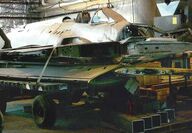
In 1946, the Army Air Force sent to industry a request for a "penetration" fighter able to escort bombers as well as perform ground attack. Three companies responded, McDonnell with the XF-88, North American with the YF-93 based on the F-86, and Lockheed with the XF-90. Of these, only the XF-88, modified to become the F-101 Voodoo, was produced. Lockheed received an AAF contract on 20 June 1946 for two prototypes, serials 46-687 and 46-688. Initially, Lockheed had proposed a delta wing, but...
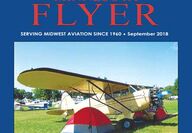
Writer/Historian Tom Lymburn shares his "Camping under a classic" photo from EAA's Airventure at Witman Airport in Oshkosh, Wisconsin. This 1933 Stinson Junior, N18285, is owned by Douglas Taylor of Backus, MN. A typical Oshkosh view, with tents under the wing....
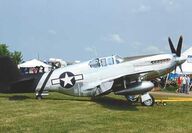
Tom Lymburn The railroad VFR traffic follows from Ripon, runs through little Pickett (unincorporated) to Oshkosh via Fisk. Pickett hasn't changed much in the 34 years I've been going to EAA. The gas station, grocery store, and Post Office are still in one building. The farm service business is next door. It's true, the corn canning plant has closed and the graveyard has grown, but that's about it. One hundred year anniversaries are relatively new to aviation. This year was the Centenary of the...
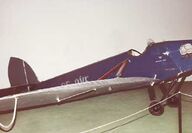
Ultra-light and light sport aircraft aren't new. Back in the early 1920's, The Daily Mail encouraged the design and manufacture of ultra light, inexpensive aircraft. One born of this competition was the DH. 53 Humming Bird. Originally fitted with a 750 cc Douglas motorcycle engine, the 524 pound Humming Bird debuted in October 1923. Later, powered with the 26 hp Blackbourne Tomtit and other engines, fifteen were produced, eight for the RAF. Three went to Australia, one to Russia, and one to...
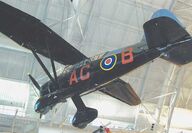
Although recognized as a maker of helicopters today, Westland started in the 19th century as a manufacturer of farm equipment. During WWI, Ernest Petter produced engines and airplanes at Westland Farm, the doors opening on 3 April 1915, as Westland Aircraft Works. Post-war Westland designed and built the Wapiti and Wallace general purpose biplanes based on the wartime de Havilland DH 9A. Designed to RAF Specification A.39/34, by a team led by Arthur Davenport, the Lysander, named after the...
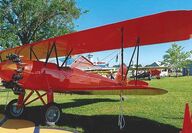
Lloyd Stearman started with Matty Laird in Chicago, moved to Wichita, and later worked with Walter Beech and Clyde Cessna at Travel Air. In 1926, he set up Stearman Aircraft Company in Venice, CA, returning to Wichita in 1927. His company produced practical biplanes for sport, passengers, mail, and training. The classic C-3B, certified under Approved Type Certificate #55 of July 1928, appeared with a 220 hp Wright J-5 Whirlwind nine-cylinder radial. A three seater, it had the traditional welded...
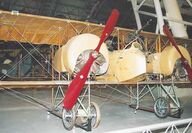
Rene and Gaston Caudron were inspired by seeing Wilber Wright fly. Their first aircraft flew from their farm on 21 September 1909. Caudron designed and constructed aircraft for civilian and military use until the end of World War II when the company disappeared. One of their most exciting aircraft was the C. 460 racer that appeared in the 1935 National Air Races flown by Michel Detroyat, winning the Greve and Thompson Trophies against U.S. competitors. This photo, taken at the NASM's Steven F....
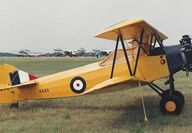
Major Reuben Hollis Fleet, U.S. Military Aviator No. 74, founded Consolidated Aircraft Corporation in May 1923. Fleet believed in making aircraft simple and safe, and produced a series of training biplanes for military and civilian use. On 25 March 1930, he formed a subsidiary company, Fleet Aircraft of Canada at Fort Erie, Ontario. Later, as Fleet Aircraft, Limited, Fleet produced two seat radial engined biplanes for the Royal Canadian Air Force and for export. Most, like the Model 2 and the...
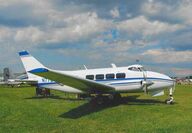
Jack Riley formed Riley Aircraft Corporation in 1952 to improve the performance of existing production aircraft. He converted the North American/Ryan Navion to twin engines, later selling the conversion rights to Temco, followed that with upgrading Cessna's 310 series as the Riley Rocket, and continued with conversions of Cessna 314, 340, 414, and 421 twins. In 1963 he upgraded the de Havilland DH. 104 Dove, originally first flown in September 1945, to the Riley Turbo Executive. A major conversi...
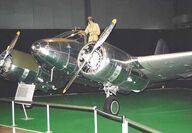
Army Air Force pilot training initially involved three levels: Primary, Basic, and Advanced (single engine and multi-engine). Advanced training was a ten-week course devoting 60 hours to ground school, 19 hours to "military" training, and 70 hours to flight time. Twin engine training used the Cessna Bobcat, Curtiss Jeep, the Twin Beech, and the Beech AT-10 Wichita. The AT-10, or Model 26, designed by a team led by T. A. Wells, trained over half of the Army's multi-engined pilots. Although Beech...
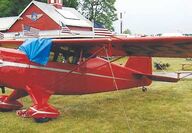
Designed by Doug Webber and Noel Hockaday, the two seat Model 6000 Speedster was delayed in production due to not being able to meet government spin regulations. The first two Speedsters, including NC15865 in this photo, were powered by a 95 hp four cylinder inverted A.C.E. Cirrus Hi-Drive air cooled engine. Cirrus engines, produced in Marysville, Michigan, from 1928 to 1935, were used mostly as power for the Fairchild 22 and Great Lakes Trainers. When the company folded, Menasco picked up the...
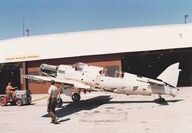
Richard Fairey began as a maker of flying model airplanes. By July 1915, Fairey Aviation Co. began construction of license built Short biplanes. From then on, Fairey was known for design and manufacture of aircraft mainly for the Royal Navy. Famous designs included the Fairey IIIF, the Flycatcher fighter, and the WWII Swordfish and Albacore torpedo bombers. The RN's first eight gun fighter was the Merlin powered two-seat Fairey Fulmar of 1940. Although large and slow, it did well in the...
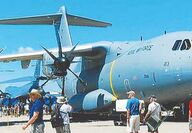
Airbus, known for its flyby wire airliners, including the popular A320 series and the gigantic A380, also produces military aircraft. The A400M Atlas turboprop transport was designed to replace the Transall C-160 and the early model Lockheed Hercules. Able to use undeveloped landing strips and capable of aerial refueling, the Atlas has suffered from development delays and cost overruns. Some countries cancelled orders for the Atlas. The prototype's delayed first flight occurred on 11 December...
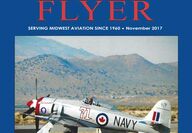
Reno Nevada, Curt Brown Taxi's Sawbones, a 1949 Hawker Sea Fury FB11, out for the Saturday Reno Air Race. Brown started from the number four position and finished in the number four position....
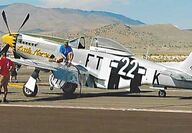
“No luggage?” It was oh-dark-thirty and we’d just left the VW at the Park-N-Fly. Sue had a small shoulder bag and I had my camera bag. “It went ahead on the semi.” “Semi?” “We’re part of an air racing team, heading to Reno for the races.” “They race airplanes?” For as long as the Reno races have existed, they are not as well known to the public as one might expect. In the Golden Age of Air Racing, from 1929 to 1939, speed in the air was a major attraction nationwide. Today, mention air raci...
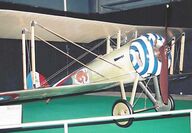
Edouard Nieuport (later changed to Nieuport) began building high speed monoplanes in June 1910. He was killed on 15 September 1911 and Henri Deutsche de la Meurthe with Gustave Delage as designer continued the name, but moved to building a series of over 10,000 V-strut sesquiplanes with rotary engines that became the backbone of French and Allied fighter squadrons. Delage broke the pattern in June 1917 with the Nieuport 28. It used untapered wings, twin Vickers guns, and a circular section...
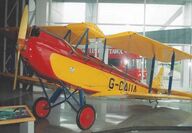
The prototype Moth, G-EBKT, was first flown by Geoffrey de Havilland at Stag Lane on 22 February 1925, powered by a Halford designed Cirrus I engine of 60 hp. The name Moth was bestowed on the two-seater biplane in reference to de Havilland's reputation as a lepidopterist. Over its production life, the DH-60 was powered by Cirrus inlines of 60-90 hp, the 75 hp Genet radial, DH Gipsy inlines of 100 to 120 hp, and the 130 hp Gipsy Major inline. Aircraft were manufactured for civilian and military...
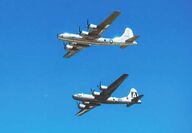
"You've been coming here a long time." It wasn't a question and I wasn't sure if it had implied age or I just looked like an Oshkosh veteran. "Over 30 years," I admitted. "This is our first time. We've had it on our bucket list for years. Now we're finally here." The wind ruffled the umbrella shade over the yellow picnic table by the Subway near the Vintage Red Barn. They were about our age, a couple from Arizona, much farther away from home than we were. "What do you recommend we see?" the...
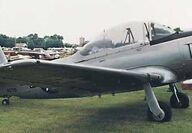
Designed by Armand Thielblot to an April 1945 US Navy specification for a new primary trainer, the XNQ-1 mockup was inspected in September 1945. Construction of three, two to fly and one for static testing, was authorized by the Navy. The prototype, Bu-75725, was first flown by Richard Henson on 7 October 1946, at Hagerstown, Maryland. It was joined in the test program by Bu-75726 in February 1947. Testing by Navy and Air Force pilots garnered good reviews. The Air Force gave it the designation...
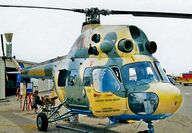
Dr. Mikhail Leontyvich Mil (1909-1970) began his career working on autogiros with another noted Russian rotary wing pioneer, Nikolai Ilyich Kamov (1902-1973). During WWII, Mil was assigned to a Red Air Force autogiro unit. In 1947, he formed his own design bureau to pursue rotary wing research. His first helicopter, the Mi-1 "Hare" with an Ivchenko piston engine was completed in September 1948 and was produced for Aeroflot and the Soviet Air Force for passengers, crop spraying, and med evac....
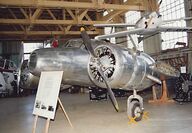
Archibald Barkley began his career working with the Wright brothers and with pioneering companies Verville, Stout, Ford, and Curtiss. Teaming up with Harold Grow in 1936, they established the Barkley-Grow Aviation Corporation in Detroit. Their main product, with its patented multi-spar all metal wing, was the T8P-1, a twin engine, twin tailed airliner, which first flew in April 1937 piloted by Frank Cordova. Test flying was done by noted air racing pilot Lee Gehlbach. The T8P-1 was awarded Appro...
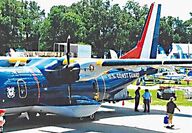
CASA or Construcciones Aeronauticas SA was formed in 1923 and became Spain's main aircraft company. It license-built aircraft from Dornier, Breguet, Vickers, Bucker, Heinkel, and Northrop in addition to producing aircraft of its own design. In 1980, it joined with Indonesia's IPTN to create Airtech for production of the CN-235 turboprop transport. Appealing to the military for its load carrying ability, excellent short field operations, and being adaptable to the maritime recon role, the...
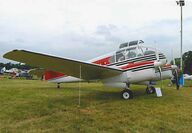
The Czech Aero company got its start in 1919 manufacturing the Austria- Hungarian designed twin gun Phoenix fighter under license. Later, it produced its own designs for civil transports, fight- ers, and bombers. After World War II, the reformed Aero began production of a family of light transports, beginning with the Aero 45 of 1947. Designed by Jiri Bouzek, Ondrej Nemec, and Frantisek Vik, the prototype Aero 45 flew on 21 July 1947, the first Czech designed aircraft to be produced after...
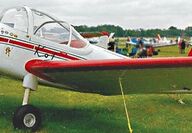
PZL or Panstwowe Zaklady Lotnicze was established in January 1928 to be Poland's main aircraft design and manufacturing concern. Known in the early 1930's for a series of parasol wing monoplane fighters designed by Zygmunt Pulaski, PZL went on to produce one of the finest twin engine bombers of the pre-WWII era. The PZL 37 Los (Elk) had excellent performance and, had the war not intervened, would have been exported to a number of countries. After the German blitzkrieg, what was left of PZL was...
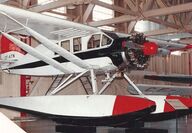
Known for its reliability, range, and cargo capacity, the Bellanca Pacemaker won the hearts of bush pilots and record setters. As an example, Russell Boardman and John Polando flew from Floyd Bennett Field to Istanbul in a Pacemaker called "Cape Cod" nonstop, a distance of 5,011 miles in 49 hours and 20 minutes between 28 and 30 July 1931. In the far north, Bellancas hauled fish, were used for aerial mapping, and mounted on floats and skies, provided mail service to remote Canadian and Alaskan...